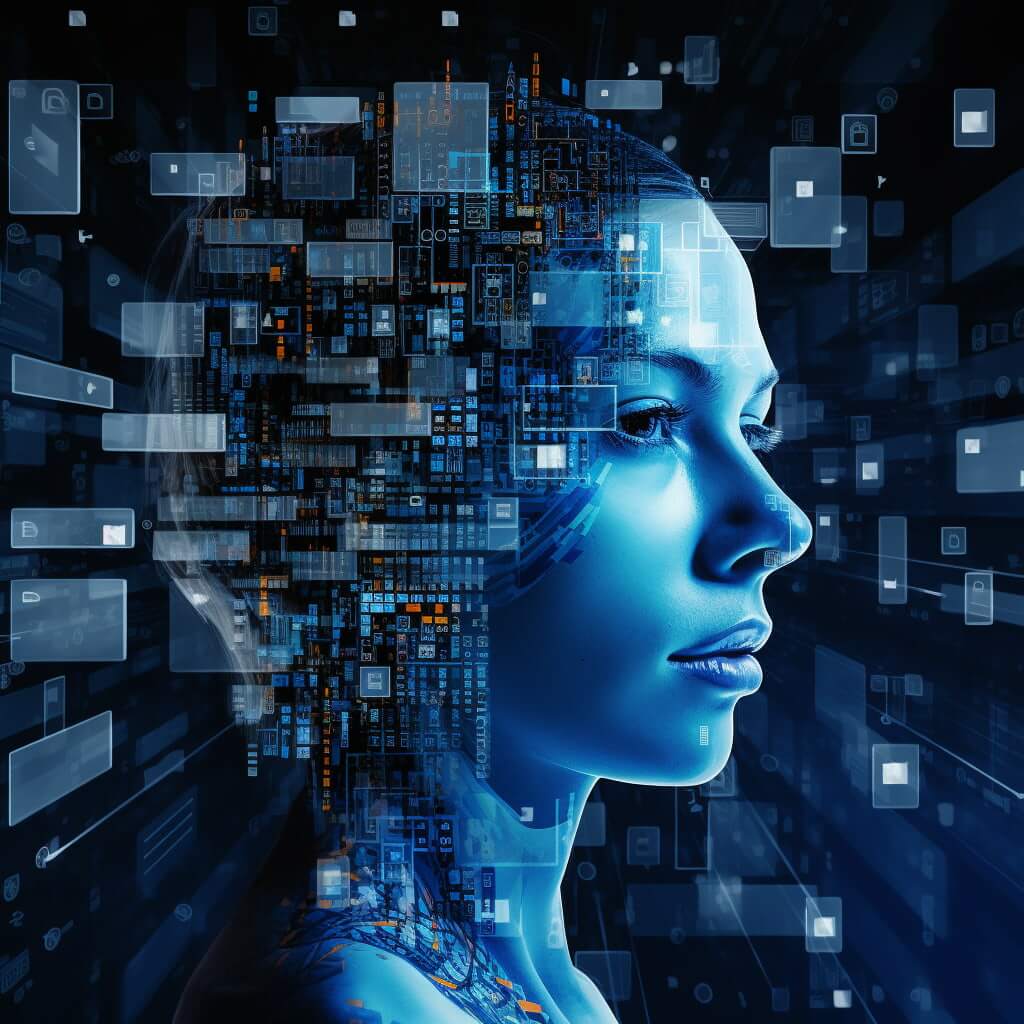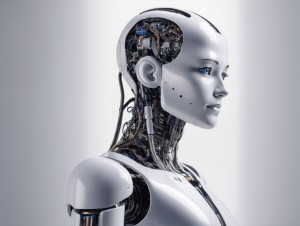Machine learning and blockchain technology offer a powerful synergy that enhances collaboration and decentralization. This partnership leverages the analytical capabilities of machine learning and the trustworthiness of blockchain data to enable smarter decision-making, increased confidence, greater automation, and decentralized intelligence. Consequently, it positively impacts business processes and enhances financial performance.
Machine learning encompasses various methods, including deep learning and reinforcement learning, providing diverse solutions to modern business challenges. These techniques form the core of big data analytics. On the other hand, blockchain networks provide a secure system for storing and sharing large volumes of data through smart contracts, which are pieces of code.
This partnership revolves around data, its integrity, and the data-driven decisions that drive the process. Blockchain ensures data security, which encourages data sharing during the training and testing of machine learning models.
Furthermore, blockchain can be applied to allocate computing resources, establish Internet of Things (IoT) networks, and create online predictive models using data from various sources.
Integrating Blockchain and Machine Learning
The combination of blockchain and machine learning has gained significant traction recently. It offers a secure and decentralized framework for direct interactions, eliminating the need for intermediaries. Machine learning addresses blockchain systems’ several limitations, resulting in high-performance and valuable solutions.
Machine learning algorithms possess remarkable learning capabilities that can be harnessed to enhance blockchain technology. This integration enhances the security of the blockchain’s distributed ledger.
Machine learning’s computational power can expedite processes like determining the golden nonce and optimizing data-sharing routes, improving efficiency. Additionally, it enables the creation of more sophisticated machine-learning models.
Utilizing blockchain’s decentralized data architecture, machine learning models can access data stored on the blockchain network for predictions and data analysis. Storing data on the blockchain eliminates issues like missing values, duplicates, and noise, which are common sources of errors in machine-learning models. This clean and reliable data enhances the accuracy and reliability of machine learning predictions and analyses.
Enhancing Machine Learning Accessibility with Blockchain
In recent years, the convergence of blockchain and machine learning has garnered significant attention and recognition for its potential to revolutionize various industries. This dynamic partnership offers a compelling solution to address critical challenges related to security, transparency, scalability, and data accessibility.
As blockchain technology advances, it fosters trust through enhanced security measures and decentralized data management. Meanwhile, machine learning algorithms are poised to reshape data analysis and decision-making processes.
Transparent AI Decision-Making
Blockchain records every decision made by artificial intelligence, enhancing transparency in AI decision-making processes. This distributed ledger ensures that data remains tamper-proof from the recording stage to scrutiny, which is crucial for establishing public trust in AI technologies.
Transparency and Traceability
Blockchain technology inherently fosters transparency and traceability due to its immutable ledger. Every change, update, or alteration made to machine learning models is recorded on the blockchain, creating a traceable history of model evolution.
This feature is instrumental in maintaining the integrity of ML models, fostering trust among users, and facilitating audits and compliance checks. Moreover, using blockchain to track improvements in machine learning models enhances accountability and addresses concerns about the opaque nature of complex algorithms.
Enhanced Scalability
The distributed nature of blockchain opens up avenues for parallel computation and enhanced scalability, particularly crucial for machine learning models that often require substantial computational resources. By distributing the computational load across multiple nodes, blockchain efficiently handles large datasets and complex calculations, optimizing processes like model training and inference.
Data Security
Blockchain’s intrinsic encryption ensures the security of data stored within its blocks, making it an ideal solution for safeguarding sensitive information like medical records and personalized suggestions. Additionally, the integration of machine learning within blockchain applications can bolster security measures and predict potential system breaches, further enhancing data protection.
Access to Data Markets
Blockchain enables individuals to store and sell access to their data, resulting in the emergence of data, model, and AI marketplaces. This democratizes data access, allowing smaller businesses to compete with tech giants like Google, Facebook, and Amazon by gaining access to the same data pools.
Improved Security
Integrating blockchain and machine learning provides enhanced security through encryption and decentralization. Blockchain’s inherent feature of storing data in secure blocks with cryptographic hashes makes it nearly impossible to alter information once recorded. This, combined with consensus mechanisms, ensures that machine learning models on the blockchain are secure, tamper-proof, and trustworthy.
Energy Efficiency
As demonstrated by Google’s use of AI to optimize data center cooling, machine learning can contribute to energy efficiency. This energy-saving approach also applies to mining operations, potentially reducing hardware costs.
Smart Contract Security
Blockchain’s transparency allows for the public scrutiny of smart contract code, making it possible to evaluate every line for flaws. AI can assist in verifying smart contracts and predicting vulnerabilities, improving their security.
Improved Customer Service
Integrating machine learning with blockchain-based applications can automate and optimize customer service processes, enhancing efficiency and user experience.
Data Trading and Manufacturing
Blockchain’s ML models control data trading routes, validate data, and enhance encryption, improving service speed. In manufacturing, the integration of ML and blockchain enhances productivity, security, transparency, and quality control.
Utilizing Blockchain for Enhanced Accessibility of Machine Learning Models

Enhancing access to machine learning models through blockchain involves a strategic process that ensures the secure sharing and monetization of these models via decentralized applications (DApps) and smart contracts.
Choosing the Right Blockchain Platform
The first crucial step in harnessing the power of blockchain for machine learning models is selecting an appropriate blockchain platform. This decision serves as the foundation for seamless integration. It involves evaluating various platforms based on key criteria such as scalability, security, and compatibility with machine-learning workflows.
By exploring the distinctive features of popular platforms, you can make an informed choice that aligns technology effectively.
Developing Smart Contracts
A pivotal aspect of this integration is the implementation of smart contracts, which are self-executing contracts with terms encoded directly into code. These contracts are central in automating and enforcing agreed-upon terms, fostering trust and transparency within the system.
To establish a robust and reliable system, it is imperative to develop, test, and deploy smart contracts on the chosen blockchain platform.
Model Training and Serialization
Before machine learning models can be seamlessly integrated into the blockchain, they must undergo a crucial preparatory phase, which includes model training and serialization. This process entails several key steps, such as data preparation, model training using suitable algorithms, and conversion of the model into a format suitable for uploading onto the blockchain.
Serialization ensures that the model maintains its structure and learned parameters, making it readily deployable and usable within the blockchain environment.
Serialization transforms a trained machine-learning model into an easily stored, communicated, or loaded format for subsequent use. Encapsulating the model’s architecture, parameters, and weights in a file or memory makes it possible to reload and utilize the model without repetitive training. Serialization is vital for integrating machine learning models across various contexts and applications.
Uploading Models to the Blockchain
With the machine learning models serialized, the next crucial step is to upload them to the blockchain. This process demands meticulous verification and validation to guarantee the model’s integrity and functionality. Uploading models to the blockchain provides them with a secure and transparent environment, setting the stage for improved accessibility.
Implementing Model Updates
Ensuring the ongoing accuracy and relevance of machine learning models requires regular updates. Implementing these updates within the blockchain ecosystem is paramount and should be executed precisely. This ensures that the model’s integrity is maintained while keeping the user community well-informed and engaged.
Challenges in Accessing Machine Learning Models
Machine learning (ML), a crucial subset of artificial intelligence (AI), has seen remarkable adoption in various industries. These models empower computers to learn from data, reshaping healthcare, finance, retail, and logistics sectors for greater efficiency and innovation.
However, the road to accessing and deploying ML models presents hurdles. Accessibility issues stemming from centralized deployment limit their broader use. Concerns about scalability, efficiency, security, and privacy compliance create significant obstacles, hindering seamless integration across applications.
Blockchain technology offers a solution. Known for its decentralized ledger, security, and transparency, blockchain addresses ML’s accessibility challenges. Its decentralized structure and consensus mechanisms build trust and verification. Moreover, blockchain enables smart contracts and ensures immutable traceability, making it a crucial player in enhancing ML model accessibility.
Blockchain holds the potential to overcome the challenges faced by this transformative technology, ushering in a new era of accessibility and trust in ML models.
Challenges in Deploying and Maintaining Machine Learning Models on Blockchain
The process of integrating machine learning models with blockchain technology comes with several noteworthy challenges, including:
Technical Complexity: Combining blockchain and machine learning is a complex task. Both technologies are intricate and demand a steep learning curve. Ensuring their seamless integration with existing systems requires substantial expertise and dedication.
Security Considerations: While blockchain is celebrated for its security, it is not immune to vulnerabilities. Addressing potential security issues and maintaining ongoing security measures is crucial to protect against malicious threats and safeguard sensitive data.
Scalability Challenges: Scalability remains a significant hurdle in blockchain and machine learning. Managing vast datasets and ensuring efficient computation requires continuous optimization to prevent performance bottlenecks.
Compliance and Regulatory Compliance: Navigating the intricate landscape of international regulations and ensuring compliance with data protection laws poses a formidable challenge. Striking the right balance between privacy and accessibility demands a nuanced approach and a deep understanding of legal requirements.
Despite these multifaceted challenges, successfully integrating blockchain and machine learning holds immense promise. By meticulously addressing each challenge and implementing the necessary measures, we can pave the way for improved accessibility and security in machine learning models. While the path ahead may be arduous, it offers the potential to unlock transformative opportunities for these technologies.
Conclusion
The integration of blockchain technology with machine learning models represents a promising solution to the challenges of accessibility, security, and transparency. By securely sharing, storing, and exchanging ML models through decentralized applications and smart contracts, blockchain opens doors to a more accessible and trustworthy AI landscape.
It addresses concerns about centralized deployment, scalability, and compliance with data protection laws. As a result, blockchain not only enhances the accessibility of ML models but also fosters innovation and efficiency across various industries.





